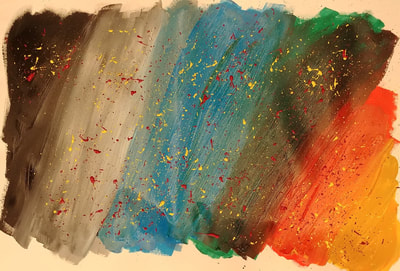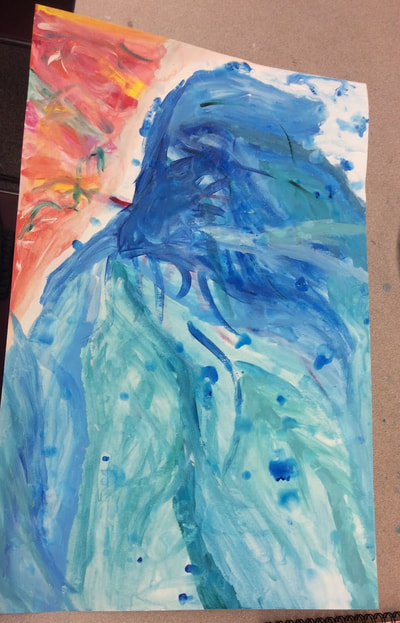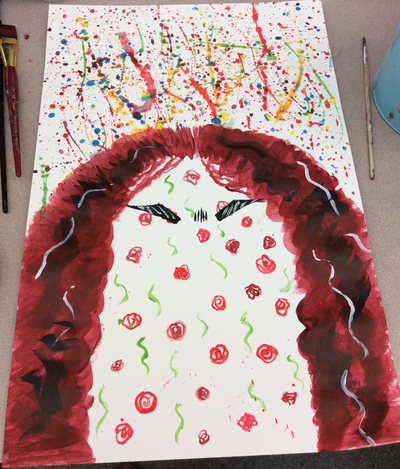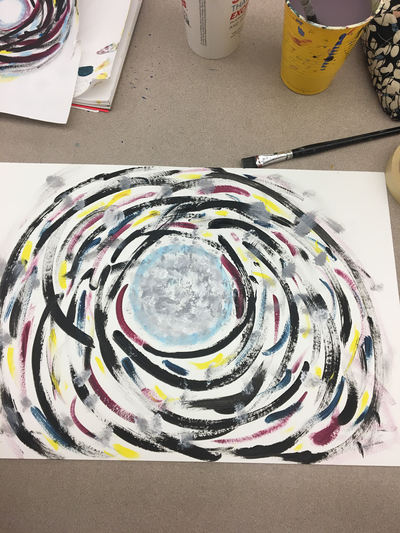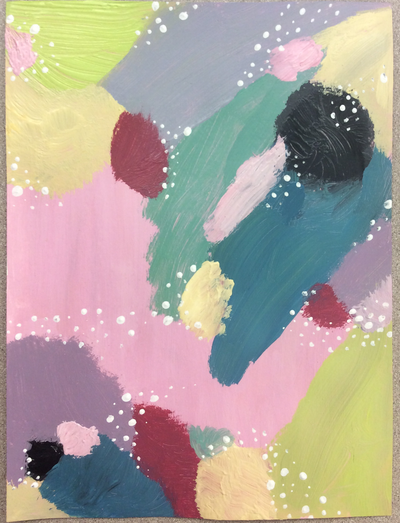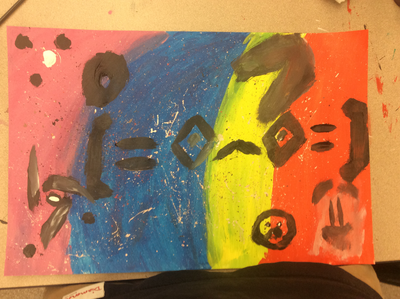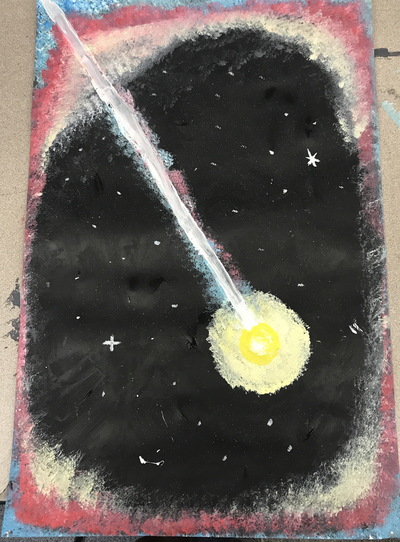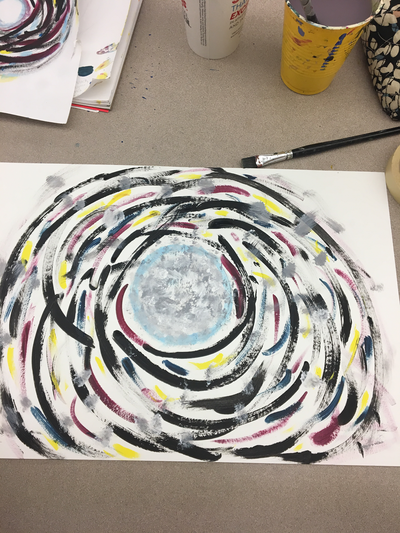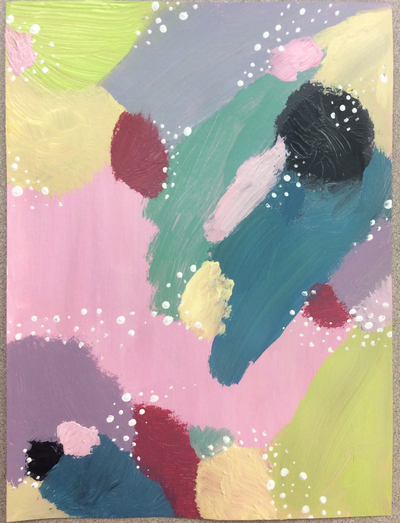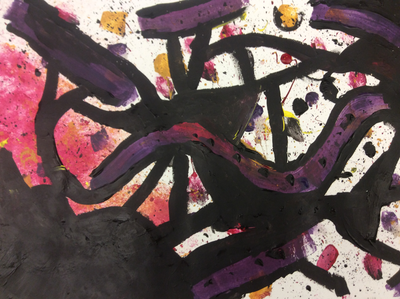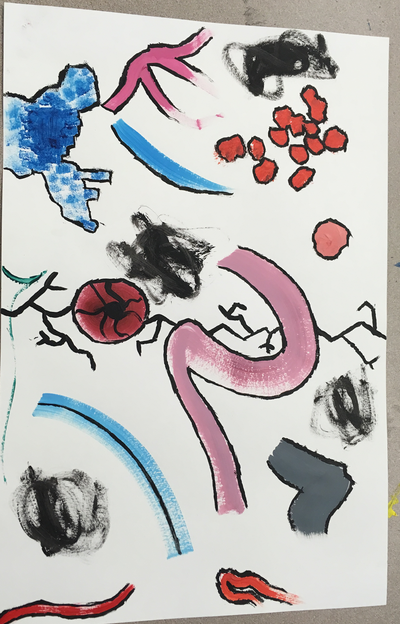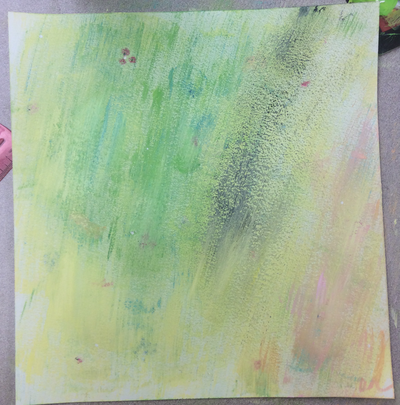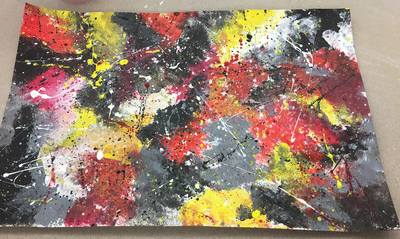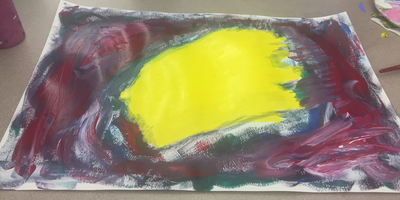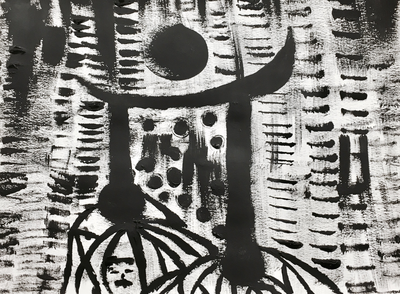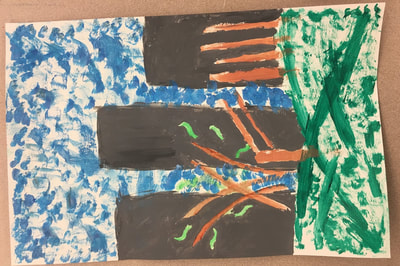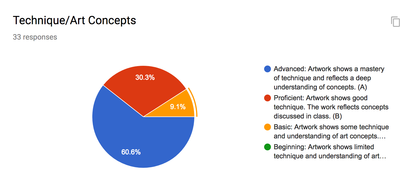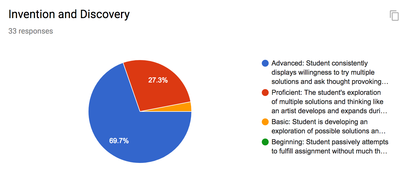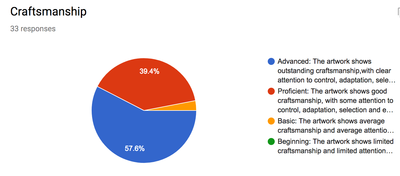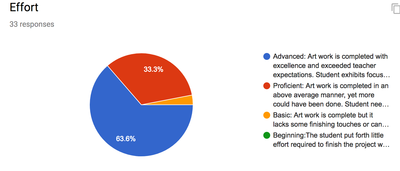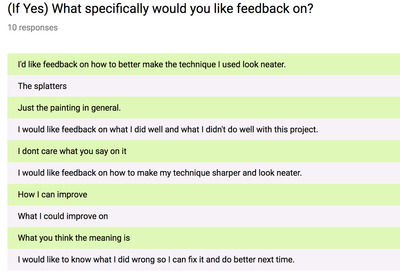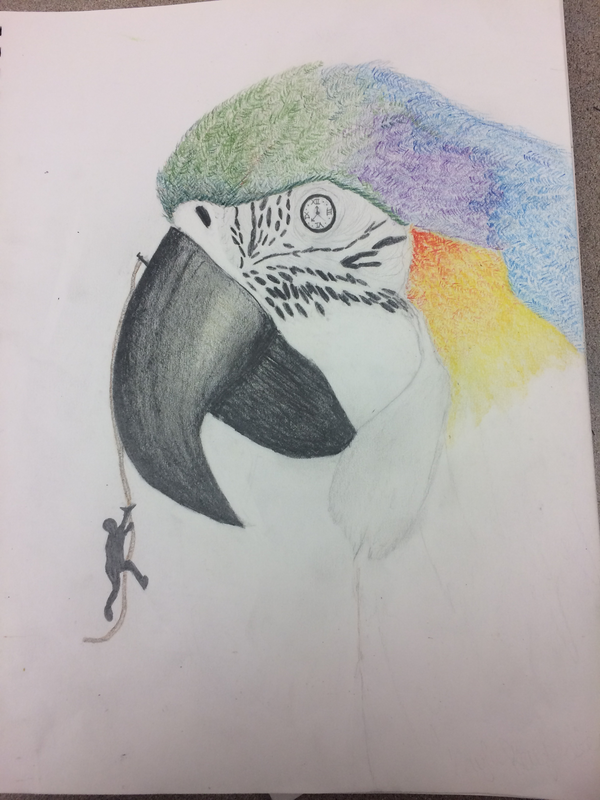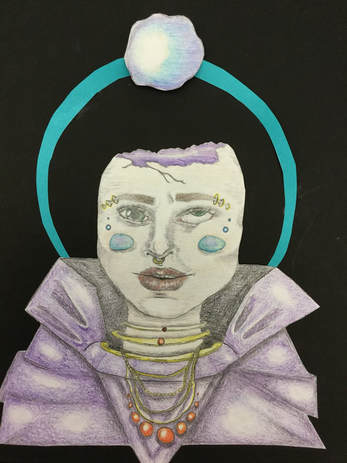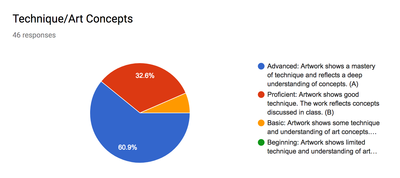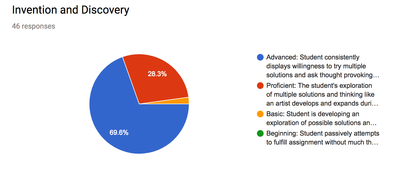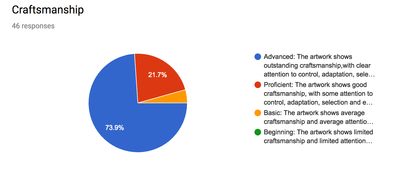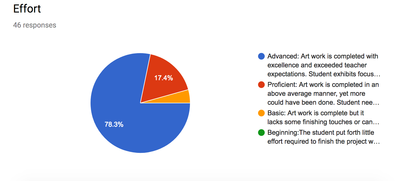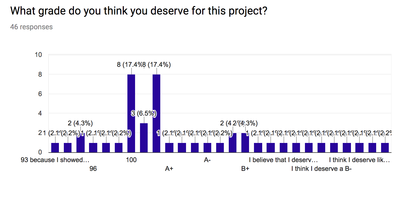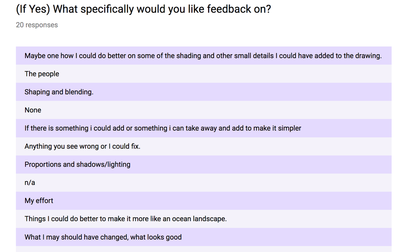Painting: Color Theory Assessment Data
Below are student works and images of the reflection that they completed at the end of the art making process. Silver Creek art department has developed a department wide rubric and reflection process as part of their assessment process. I feel that this method places the learning completely in the hands of the student and allows them to complete the art making process of Idea-Plan-Research-Create-Reflect-Create.
Using google classrooms I distributed a rubric and reflection made in google forms. This form was equipped with visual data representations for the whole group response. This gives the viewer a whole class perspective on the lesson based on individual responses. I particularly found useful the last question response field, what would you like feedback on. This narrows down where the student feels that they need assistance or would like to learn more. Although in this placement I was using this as a summative assessment I think it would be good to try and incorporate something similar for formative assessments.
Drawing: Dreams and Nightmares Data
Giving the learners the opportunity to assess their own learning increases their awareness of their participation and control over their own knowledge. Silver Creek focuses on leadership as a school wide characteristic, in the art department this is put to the test.
Looking at the data in this way is only useful for an overview, to efficiently assess how each learner is handling the concepts and techniques one must look at individual responses, like the ones found here.
Looking at the data in this way is only useful for an overview, to efficiently assess how each learner is handling the concepts and techniques one must look at individual responses, like the ones found here.
